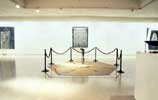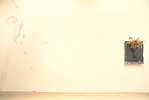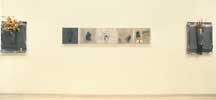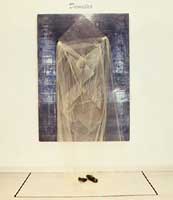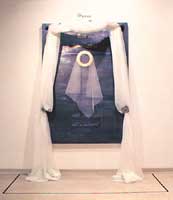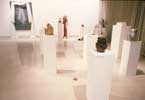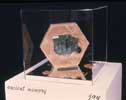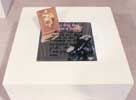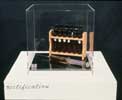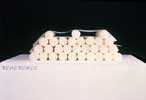
click thumbnails to enlarge
Installation Views
|
"Walking into the space, one is aware
of the distinctive fragrance of beeswax permeating the air. In addition
to beeswax, fragrance comes from three glass brink vases, which contain
aromatic spices of fenugreek, coriander and lavender. All of these
spices intermingle to create a subtly intoxicating atmosphere. Also
stimulating is the sound of the space, which resonates with a continuous
rhythm; on closer listening, one realizes it is produced by a cappella
tap dancing. The sound's mesmerizing, repetitive pattern calls to
mind humming bees and archaic chants.” It was my intention to
not only challenge conventional notions of science as it relates to
nature and art but to also fully involve the viewer in the sensual
pleasures of Dance of the Melissae."
|
|
First Dance Installation |
|
|
First Dance detail |
| "There is a spiritual and feminist dimension to Macko's imagery. In The Large Votives she connects the bee society, in which the queen bee reigns, to matriarchal religions, in which goddesses were central....For Macko, the goddess symbolizes a female centered spirituality and the bee society represents 'the feminine potency of nature.' " (MacNaughton) |
|
"In Stations of the Goddess Macko looks to the matriarchal era preceding the patriarchal order of Christianity. Instead of memorializing death and sin, her stations celebrate life and health...The central material in several of these found object assemblages is bee pollen, which embodies the idea of fertilty." (MacNaughton) |
|
Installation view
|
Installation View |
Installation View
|
|
|
Ancient Memory |
Daughters |
Nurturance |
Wellness
|
|
Rectification |
Abundance |
Sacred Prostitutes |
Vestments of the Bee Priestess |
|
Fertility |
Ablution |
Ambrosia |




